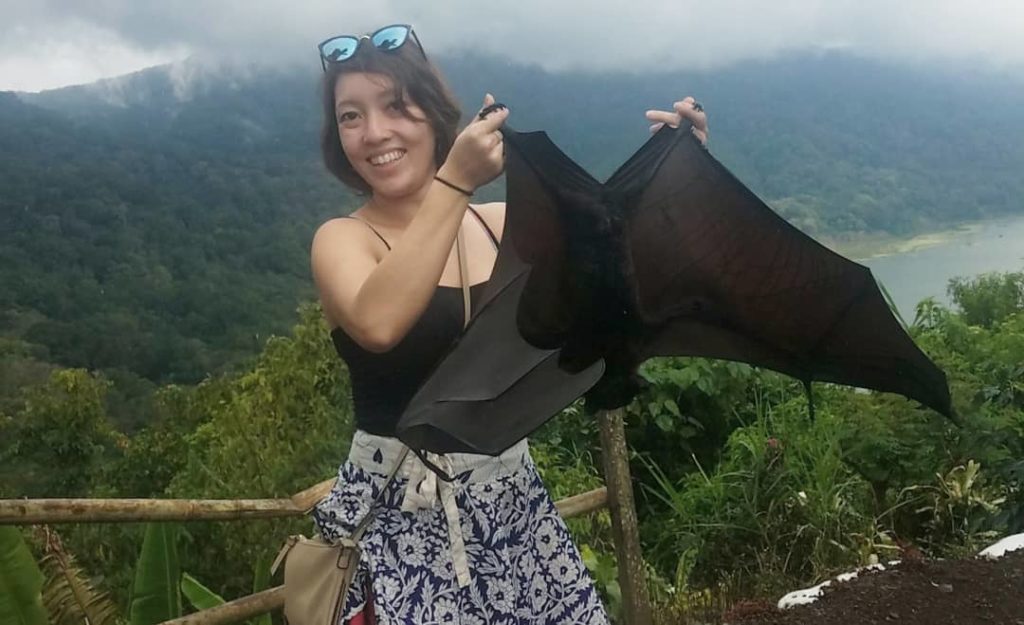Laura Johnson
Laura Johnson
Laura Johnson
Position: Lab Manager, Lead Technician, and Associate Research Scientist, 2018-Oct2021
Project: Involved with all projects in the lab
Education: B.Sc. in Zoology, University of Guelph, 2011; M.Sc. Applied Biology, Saint Mary’s University, 2014
Website: https://laurajohnsonresearch.com/
Research Interests
I have a strong interest in using molecular techniques to answer ecological questions of cryptic species. My research experience has allowed me to focus on conducting research to determine population genetics and movement patterns of various species. I aim to conduct research that can influence wildlife conservation and management strategies.

Background
I was raised in Ontario, Canada where I developed a strong interest in wildlife biology. After being accepted into University of Guelph’s Zoology program, I became fascinated with conservation biology and was given the opportunity to conduct an undergraduate research project examining the effects of small mammal granivory on native tall grass prairies in Southern Ontario. During this project, I developed a strong passion for research and decided to continue my education by attending Saint Mary’s University to obtain my M.Sc. My thesis used molecular techniques to delineate the seasonal migration patterns of the northern long-eared bat (Myotis septentrionalis) across mainland Atlantic Canada. It was during my graduate research where I began to understand the value of using molecular techniques to further identify ecological processes, specifically in cryptic species. Since completing my thesis, I have aimed to obtain a career using molecular research to further develop conservation and management strategies. Following my graduate degree, I have had the opportunity to work with several amazing institutes including the Biodiversity Institute of Ontario, the Wyoming Natural Diversity Database, and the Rollins Urban and Structural Entomology Facility at Texas A&M University.
Publications
Eyer, PA., Blumenfeld, A.J., Johnson, L.N.L., Perdereau, E., Shults, P., Wang, S., Dedeine, F., Dupont, S., Bagnères, AG., Vargo, E.L. (In Press). Extensive human-mediated jump dispersal within and across the native and introduced ranges of the invasive termite Reticulitermes flavipes. Molecular Ecology.
Blumenfeld, A.J., Eyer, PA., Husseneder, C., Mo, J., Johnson, L.N.L., Wang, C., Grace, J.K., Chouvenc, T., Wang, S., Vargo, E.L. 2021. Bridgehead effect and multiple introductions shape the global invasion history of a termite. Communications Biology. 4(196). https://doi.org/10.1038/s42003-021-01725-x
Thorne, B.L., Vargo, E.L., Adams, E.S., Johnson, L.N.L., 2019. Genetic analysis of invasive conehead termites (Blattodea: Termitidae) reveals a single origin for two populations in Florida. Journal of Economic Entomology. toz227 https://doi.org/10.1093/jee/toz227
Eyer, P., McDowell, B.A., Johnson, L.N.L., Calcaterra, L.A., Belen-Fernandez, M.B., Shoemaker, D., Puckett, P.T., Vargo, E.L. 2018. Supercolonial structure of invasive populations of the tawny crazy ant Nylanderia fulva in the US. BMC Evolutionary Biology. 18(209). https://doi.org/10.1186/s12862-018-1336-5
Johnson, L.N.L., McLeod, B.A., Burns, L.E., Arseneault, K., Frasier, T.R., Broders, H.G. 2015. Population genetic structure within and among seasonal site types in the little brown bat (Myotis lucifugus) and the Northern long-eared bat (M. septentrionalis). Plos One. 10(7): e0133457. https://doi.org/10.1371/journal.pone.0133457
Sergers, J.L., Irwin, A.E., Farrow, L.J., Johnson, L.N.L., Broders, H.G. 2013. First records of Lasiurus cinereus and L. borealis (Chiroptera: Vespertilionidae) on Cape Breton Island, Nova Scotia, Canada. Northeastern Naturalist Notes. 20: 14-15. https://doi.org/10.1656/045.020.0410
Germain, R., Johnson, L., Schneider, S., Cottenie, K., Gilis, L., MacDougall, A.S. 2013. Spatial variability in plant predation determines the strength of stochastic community assembly. American Naturalist. 182: 169-179. https://doi.org/10.1086/670928
Presentations
Johnson, L.N.L., Ernest, H.E. (Jun 2019). “ From individual to species: Case studies from the wildlife genomics and disease ecology lab at University of Wyoming.” Poster Presentation. Society for Wildlife Forensics, Denver, CO, USA
Johnson, L.N.L., Vargo, E.L., Perdereau, E., Dedeine, F., Bagnères, A. (Nov 2017). “Delineating the global invasion history of Reticuliteremes flavipes using single-nucleotide polymorphisms.” Entomological Society of America, Denver, CO, USA.
Johnson, L.N.L., Frasier, T., Burns, L., Broders, H.G. (Aug 2013). “Connectivity and population structuring of Myotis septentrionalis within mainland Atlantic Canada.” International Bat Conference/ North American Society for Bat Research, San Jose, Costa Rica.
Johnson, L.N.L., Frasier, T., Burns, L., Broders, H.G. (Oct 2012). “Population genetic structure of Myotis septentrionalis on island and mainland areas of Atlantic Canada: A proposal.” Poster Presentation. North American Society for Bat Research, San Juan, PR, USA.
Johnson, L.N.L., Germain, R. (Apr 2011). “Little mouse on the prairie: small mammal impacts on native plant diversity.” General public talk. RARE Charitable Research Reserve, Blair, ON, Canada.
Johnson, L.N.L., Germain, R., MacDougall, A.S., Cottenie, K., Gillis, E. (Mar 2011). “Spatial variability for granivory determines the strength of stochasticity during community assembly.” Poster Presentation. Ontario Biology Day, Wilfred Laurier University, Waterloo, ON, Canada.

